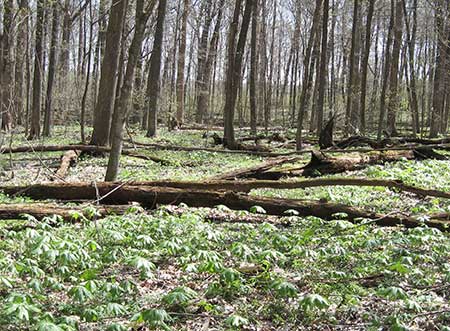Your Woods
What types of woods do I have?
This content was originally published in our handbook for landowners, My Healthy Woods. Follow the link at the right to request a free copy.
Wisconsin’s diverse physical landscape supports many different types of woods. Understanding the types that you have will help you care for your land in the present and see what it’s capable of becoming in the future.

Another way to refer to your land is as an “ecosystem”: the complete system made up of all the living beings in your woods, such as trees, birds, and wildflowers, and the non-living parts, including the bedrock, water, and soil.
Here, we describe the common types of woods, or “natural communities,” you can expect to see in Wisconsin. Natural community is simply another name for the living parts of the ecosystem.
Soil moisture and natural communities
Often natural communities are separated along a gradient of soil moisture, or the historical occurrence of fire. In fact, soil moisture status is usually reflected in the naming of these communities; for example, southern “dry-mesic” woods.
The soil moisture categories are:
Dry, meaning very low soil moisture, because the soil is either very sandy or rich but shallow and very well-drained.
Dry-mesic soils retain more moisture but are still well-drained.
Mesic, meaning moderately moist soils.
Wet-mesic soils are very moist and poorly drained.
Wet soils are very poorly drained, with periodic standing water.
Types of communities
As you walk through your woods, pay attention both to the species of bigger, more mature trees you find, and the seedlings and saplings growing underneath. These two groups can tell you a great deal about the history of your woods and what it will look like in the future. That is, the trees that are seedlings and saplings today will likely be your woods of tomorrow.
Some of the natural communities you may find on your land, from driest to wettest, include:
